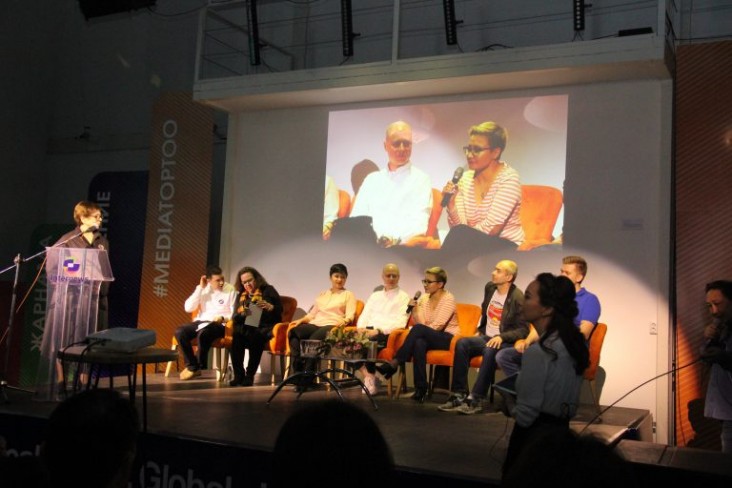Speeches Shim

Media-K is a three-year project that helps to strengthen the professionalism and independence of media in the Kyrgyz Republic so that citizens have greater access to diverse and balanced information.
Duration: October 1, 2017 – September 31, 2020
Budget: $6,500,000
Implementing Partner: FHI360 and Representative office of Internews Network in the Kyrgyz Republic
Key Partners: Media Policy Institute, NTS, TV1KG, Kloop Media, Kaktus Media, Politklinika, Salam Radio, 24.kg, Govori TV, Maral TV, Elgezit, Lubimyi TV
Activity Locations: Nationwide
CONTEXT
Despite the progress that has been made in recent years, Kyrgyzstani media outlets still face challenges in adopting the professional market approach needed to grow their audiences and their revenues, and in working with other media stakeholders to advocate for a more enabling legal environment.
MAJOR FOCUS AREAS
Despite the recent progress, Kyrgyzstani media outlets still struggle to adopt professional market approaches to grow their audiences and their revenues. They also face challenges in working with other media stakeholders to advocate for a more enabling legal environment.
Media-K strengthens the professionalism and independence of media by:
- providing comprehensive support to selected independent media outlets
- funding production of high-quality and engaging local content
- training journalists and other media professionals
- bringing the media community together at an annual forum
- assisting in introduction of TV audience measurement
- advocating for reforms and legal literacy in the media sphere.
IMPACT AND RESULTS
- In two years, 11 private TV stations, radio broadcasters, and online newsrooms that worked with the project increased their audience in the range of 31% to 54% on average. The project assisted them with creating new content, modernizing studios, training staff and providing mentorship to support their transformation into viable businesses. Here are some examples:
- NTS became the first private TV broadcaster in the country that fills its broadcasting schedule with its own content.
- Lubimyi TV met the requirement to have at least 50% of domestic content.
- Maral TV and Salam Media expanded their audiences by upgrading their radio studios with equipment for video broadcasting on YouTube and other social media.
- Batken-based Salam Media launched a new service – publishing paid private announcements on social networks from labor migrants living abroad. Batken is the poorest region of Kyrgyzstan where 30% of income comes from those working abroad. With very few options for ad revenue, local media are coming up with creative solutions.
- TV1KG managed to increase its ad revenue by 50% partly due to its popular evening talk show (A Hard Day’s Night) that was launched with Media-K’s support.
- In 2019, content from four media outlets that worked with Media-K were awarded at a journalism contest among outlets from five Central Asian countries. The contest was organized by USAID’s MediaCAMP project.
- Media outlets, independent studios and other content producers published 89 hours of original video content and 223 articles with the project’s support. 23 media outlets rebroadcasted or republished the pieces, which demonstrates demand for high-quality, local content in the market.
- Media-K trains journalists and outlets to work with data and develop stories based on data analysis. Such stories generated on average 35% more views than comparable publications. This means data-driven reporting can pay off the extensive time and resources invested.
- In 2019, the Media Toptoo Industrial Forum became the country’s largest media event, attracting 360 local and foreign industry professionals. They discussed the situation in the national media market, shared experience and learned about emerging trends. The forum also helped to boost the sense of professional pride among journalists and media managers.
- The first TV audience measurement data is available in test mode. Peoplemeter devices that help to measure real-time television audience have been installed in 300 households of Bishkek, Osh and Jalalabat cities. Based on the experience of other countries, peoplemeter and reliable audience measurement is expected to substantially accelerate growth in the domestic advertising market.
- The Kyrgyz Republic jumped 15 places in Reporters Without Borders’ (RSF) World Press Freedom Index, from 98 in 2018 to 83 in 2019, seeing its highest score since RSF began including it in the report. RSF highlighted the president’s and former president’s withdrawal of lawsuits against critical media outlets (which Media-K contributed to significantly) as key factors in the country’s rise.

Comment
Make a general inquiry or suggest an improvement.